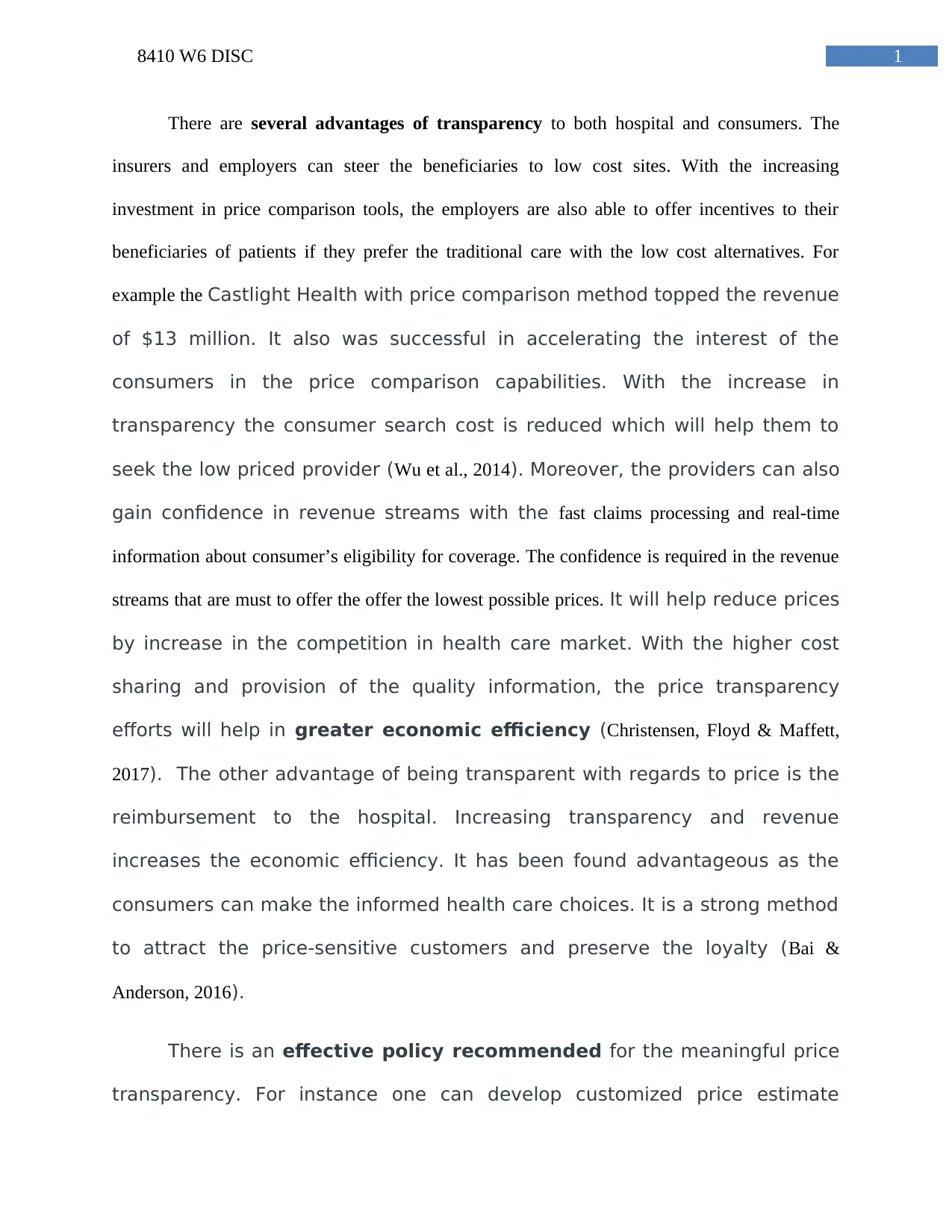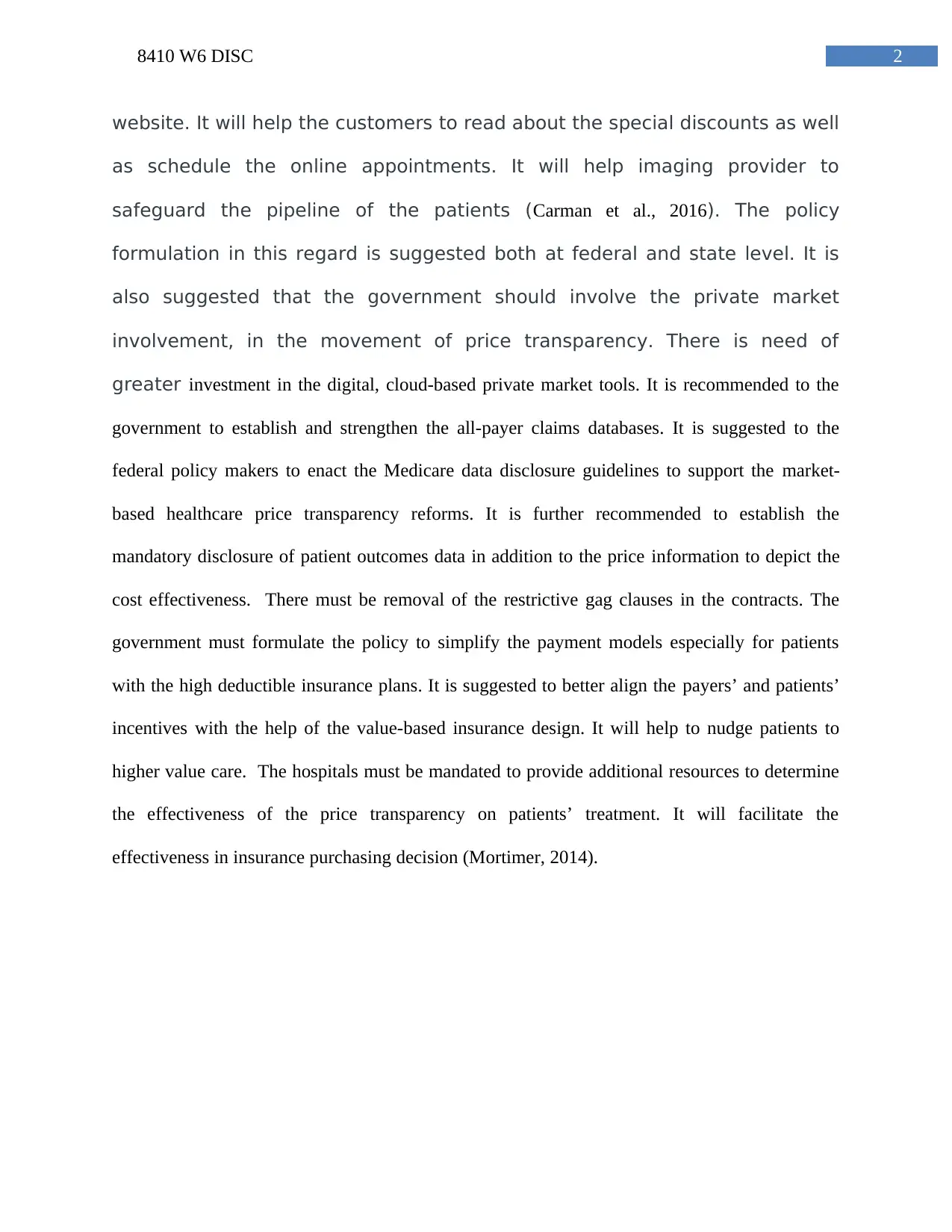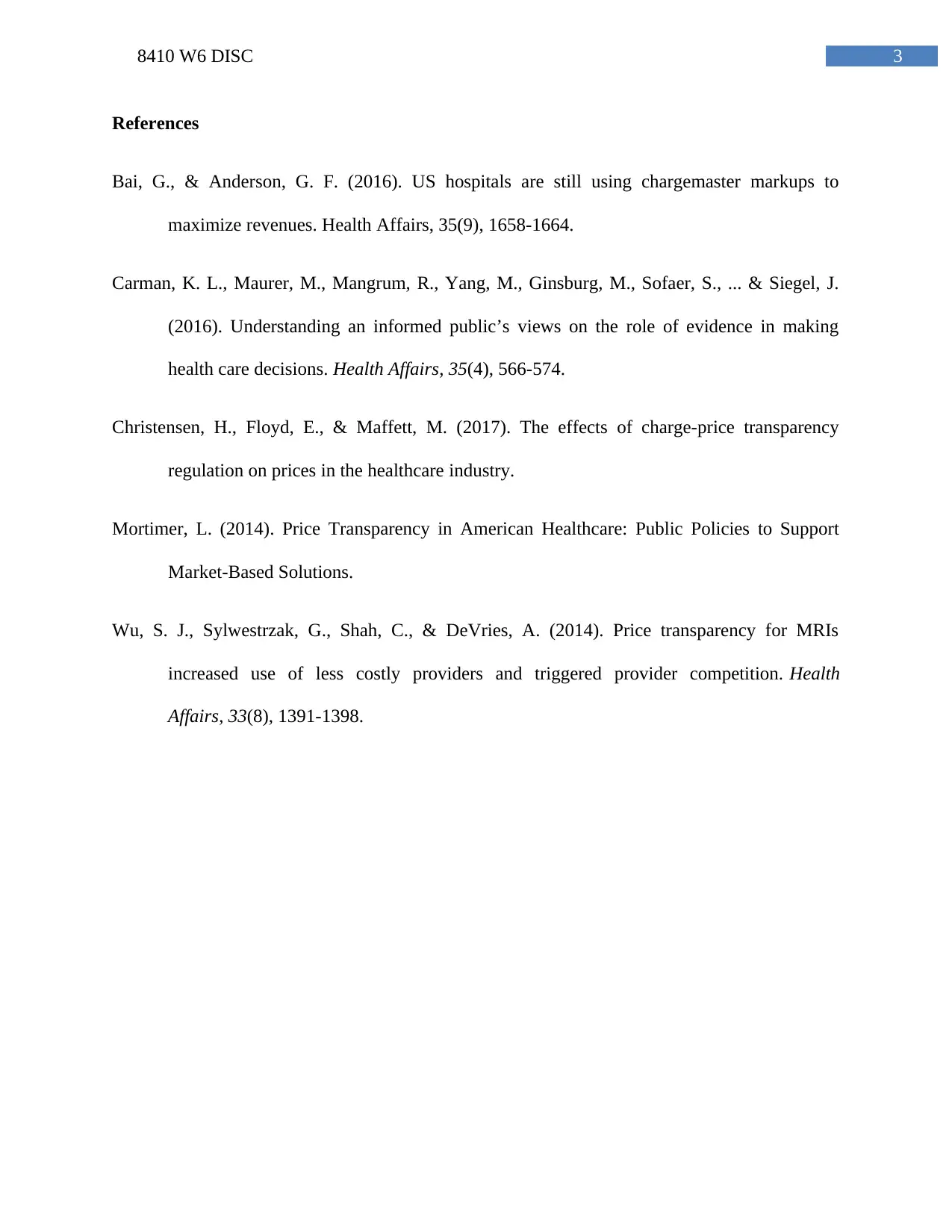Analyzing Healthcare Cost Transparency: Regulation and Policy
VerifiedAdded on 2023/06/11
|4
|785
|360
Discussion Board Post
AI Summary
This discussion board post delves into the advantages of cost transparency in healthcare for both hospitals and consumers, highlighting how it can steer beneficiaries to low-cost sites and reduce consumer search costs. It emphasizes the importance of transparency in fostering competition and economic efficiency within the healthcare market. The post also recommends policies for meaningful price transparency, including the development of customized price estimate websites and government involvement in promoting digital, cloud-based tools. Furthermore, it suggests strengthening all-payer claims databases, enacting Medicare data disclosure guidelines, and establishing mandatory disclosure of patient outcomes data. The discussion concludes by advocating for simplified payment models and value-based insurance design to better align payer and patient incentives, ultimately improving the effectiveness of price transparency on patients’ treatment and insurance purchasing decisions. Desklib offers a variety of similar solved assignments and resources for students.
1 out of 4











![[object Object]](/_next/static/media/star-bottom.7253800d.svg)